 Home
Blog
Knowledge
About
Home
Blog
Knowledge
About
An article about Acer saccharum, or sugar maple, created during the “Dendrology” module during my studies. Translated from German.
The deciduous tree reaches a height of 25 - 40 meters and forms an unregulary shaped tree crown. The bark is smooth and grey. With age the bark is of darker color and has shallow seams. [[1], p. 89]
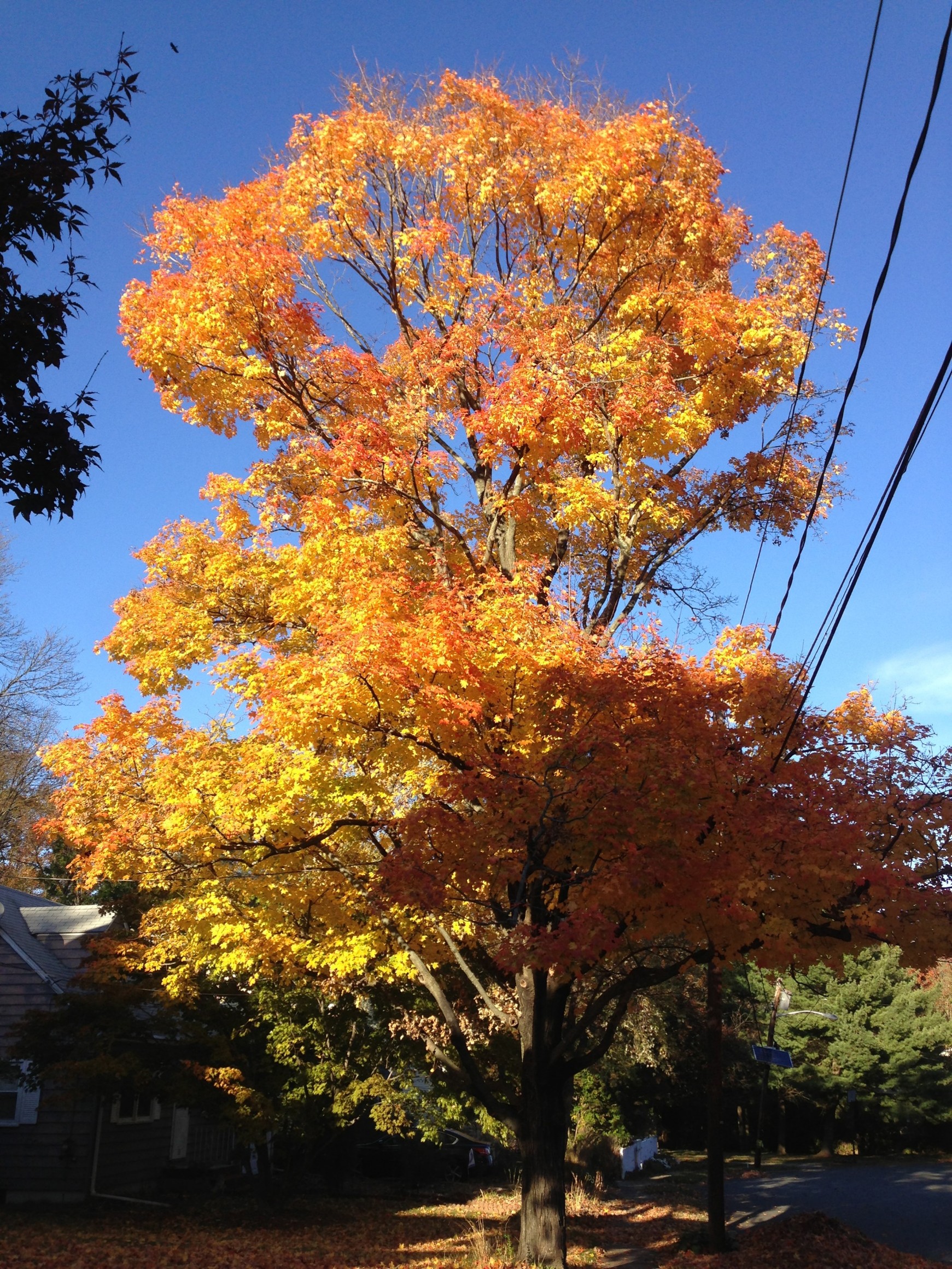
The leaves of the sugar maple are 8 to 10 centimeters wide and lobed with 3 to 5 lobes, palmate. The upper lobes are longer than the basal lobes. In contrast to the sharp notches of the lobes of Acer velutinum (velvet maple) and Acer heldreichii (balkan maple), Acer Saccharum displays rounded notches. The margins are toothed with a small number of teeth, which is an additional distinguishing mark to Acer velutinum (velvet maple), as well as Acer rubrum (red maple). In autumn, the leaves display a strong yellow-red color. The petiole does not secrete a milky juice, like Acer platanoides (Norway maple) does. [[1], pp. 69-70]
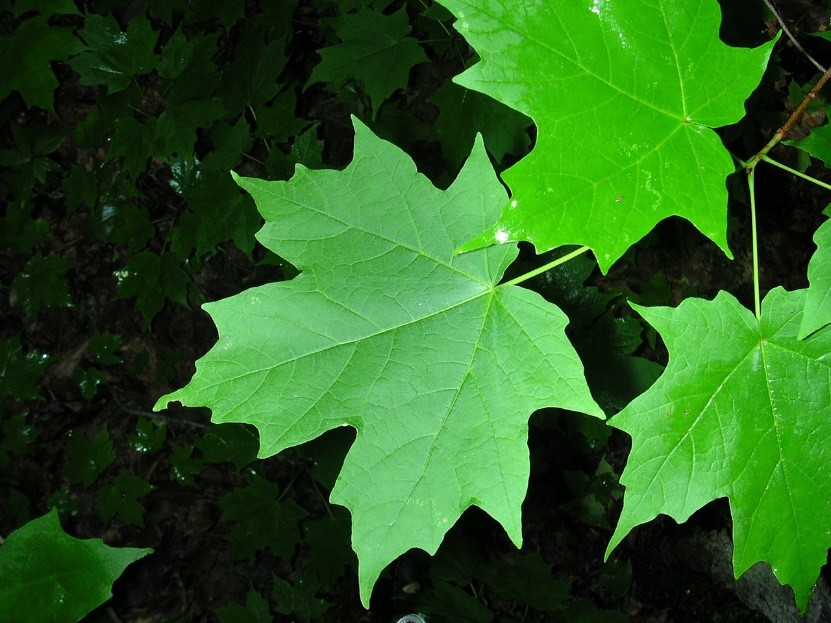
The flowers are in hairy panicles, bell shaped and of green yellow color. The flowers blossom, before first leaves appear, in April.
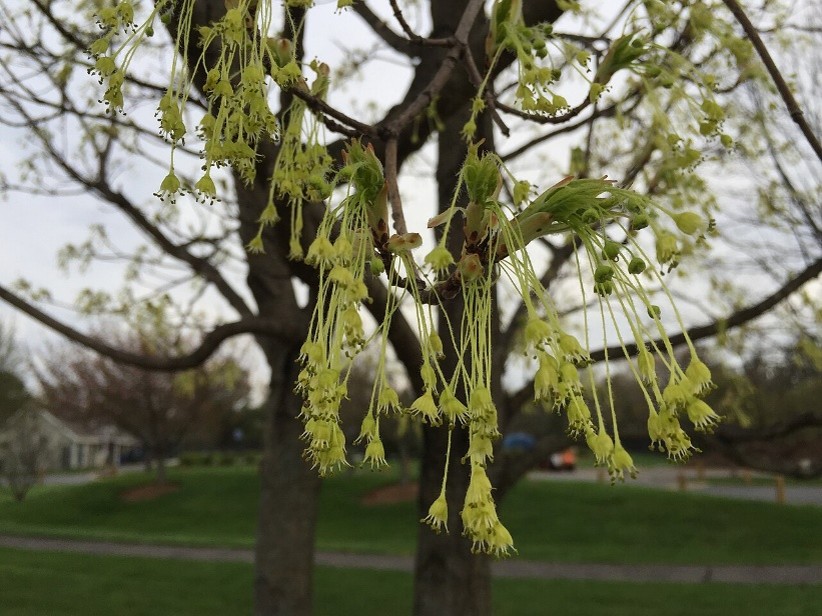
The fruits of Acer saccharum are typical Acer family fruits - samaras - which are oriented in parallel or slightly angled. The fruits are 2,5 - 4 centimeters long. [[1], p. 89]
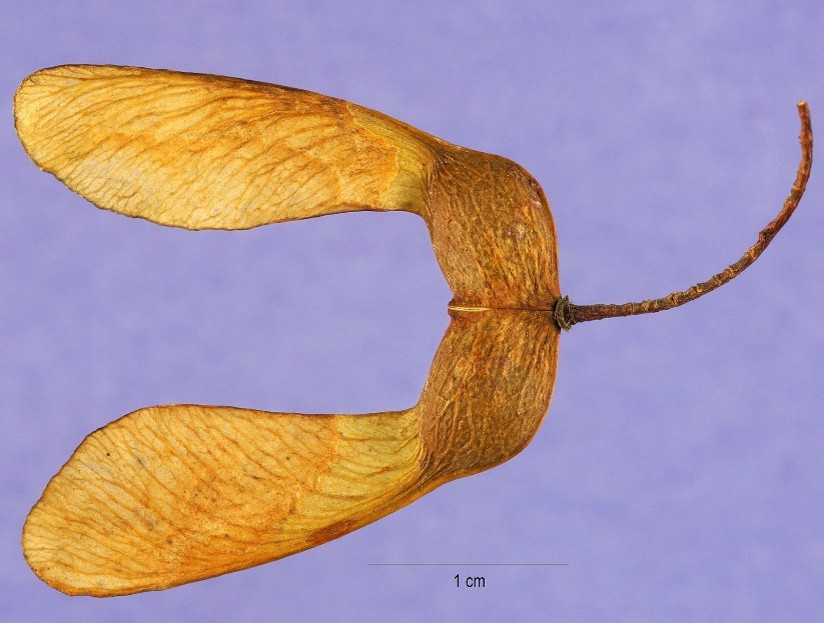
The dispersial area of Acer saccharum is North America. The population is located at the East and North East of Canada, as well as the North, Central and South East of the USA.[2]
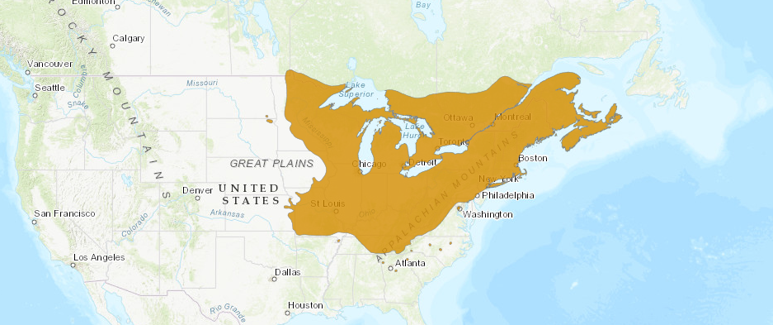
The habitat within this dispersal area can be characterized as moderately wet and cool. That being said, at border areas of the habitats temperature extremes of -40 °C in the North and up to 38 °C in the South are possible. In the entire dispersal area an over-the-year evenly distributed participation is observed. Acer saccharum is tolerant to shade and, because of this property, present in 7 mixed forest cover types of “American Foresters forest cover types” as main species, and in 17 more forest cover types a commonly found species. This wide presence of Acer saccharum makes the species of great importance for the forests of its dispersal area. [[3], p. 80]
Acer saccharum is an important species of the mixed forests of North America: in 1990, Acer saccharum grew on 9 % of the hardwood-forest covered area of the USA. The species is thus a central component of the ecosystems of this area. [[3], p. 78].
The sugar maple is sensitive to street salt and can thus not optimaly grow in urban areas. [[3], p. 78] The overall population is in decline. The reasons for the decline are subject of discussion and research. One commonly identified reason is increased ecological stress created by acid rain as consequence of air and exhaust gas pollution. This stress in combination with other factors, such as droughts, has negative impact on the growth and population of Acer saccharum. Stressed specimens are more often affected by pests and pathogens. [[4], Figure 1].
As result of the shrinking population and lighter tree crowns, typical habitat animals like Empidonax minimus (least flycatcher) are having difficulties finding optimal conditions to reproduce. Additionally, overall decremental effects on biodiversity of insects and vegetation can be observed (for example for specific species of fern). [[5], p. 441]
While current agrees on acid rain and the resulting deficit of calcium as a main stressing factor, the population decline continues to be observed on reference areas where conditions of polution improved. Additionally, current research does not yet find a correlation between decreased growth and already observable effects of global warming. [6]. More research is needed to determine the underlying reasons of the population decline - taking in account more factors of a possible “decline complex”, as presented by Manion, 1991 (“Tree disease concepts”). [6]
While having little to no importance for the lumber industry in Europe, the hard wood with its small pores is used for flooring in industry, fitness studios and living spaces in the Americas. A typical usecase of the hard wood are floors of bowling alleys. [ [7], p. 3]. Another important use of Acer saccharum is the harvesting of sap - also known as maple syrup. The production of maple syrup has a long history and began before the european settlement of North America. Different legends exist about the roots of this tradition. [[8], Chapter 2.].
The leaf of the sugar maple is symbol of the flag of Canada, as well as of multiple US states. In frech canadian colonies, the use of the symbol is documented since the early 18th century. The cultural importance is most visible in these words about the maple by the first mayor of Montréal: “the king of our forest; … the symbol of the Canadien people.” [[9], Chapter 1]